Yu-Gi-Oh is a card game targeted toward children. However, unlike most TCG, the nitty-gritty mechanics are pretty complicated. This article will look at the many rulings of Yu-Gi-Oh that beginning players likely made when playing Yu-Gi-Oh TCG. You can view Part 1 and Part 2 here.
Properly Summoned first
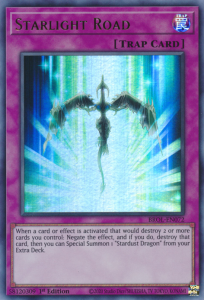 SCENARIO: You activated Heavy Storm to destroy all Spell/Traps. Your opponent counters with Starlight Road, negating Heavy Storm and summoning Stardust Dragon. You then activate Raigeki to destroy all his monsters, only for your opponent to counter it with Stardust Dragon's effect. Your opponent tried to revive Stardust Dragon at the end phase via its own effect. You said they can't because Stardust Dragon was never properly Summoned. Your opponent then yelled at you, telling you to read Stardust Dragon's effect.
SCENARIO: You activated Heavy Storm to destroy all Spell/Traps. Your opponent counters with Starlight Road, negating Heavy Storm and summoning Stardust Dragon. You then activate Raigeki to destroy all his monsters, only for your opponent to counter it with Stardust Dragon's effect. Your opponent tried to revive Stardust Dragon at the end phase via its own effect. You said they can't because Stardust Dragon was never properly Summoned. Your opponent then yelled at you, telling you to read Stardust Dragon's effect.
Yu-Gi-Oh monsters can be categorized into three categories: Nomi, Special Summon only monsters (Semi-Nomi) and plain old monsters. Plain old monsters are the typical monsters you see. You can normal summon them, set them, Special Summon them (with another card effect or by its own effect) and revive them anytime. Monsters like Sangan and Cyber Dragon are just plain regular monsters.
We then have Nomi monsters. These are monsters that can ONLY be Summoned through a specific method. Judgment Dragon, Armed Dragon LV10 and Doom Dazer are Nomi monsters. They each have their own unique summoning condition, and they can't be Normal Summoned, set or revived from the grave at all. 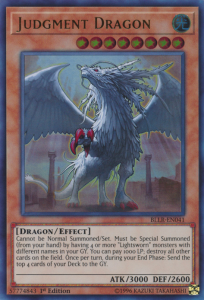
We then have monsters known as Semi-Nomi monsters. These monsters usually have a unique condition that the player must fulfil before summoning them (e.g. "Must first be Special Summoned..."). Semi-Nomi monsters are confusing because after they are properly summoned, they can be revived from the grave afterwards with cards like Monster Reborn, unlike Nomi monsters. For example, Dark Necrofear is a Semi-Nomi monster. If you Special Summoned it first by banishing three Fiend monsters in the grave, and it somehow ended up in the grave, it can be revived by cards like Monster Reborn later. However, say that Dark Necrofear was in your Deck and you sent it to the grave with Foolish Burial. In this scenario, you can't Special Summon Dark Necrofear with Monster Reborn as it was never summoned correctly in the first place.
This rule is even more confusing because of Fusions, Synchros, Xyzs and Links. All Extra Deck mechanics are, by default, Semi-Nomi monsters despite not having the clause, "Must first be...". All Extra-Deck monsters must be properly Summoned (via their own mechanic, e.g. Fusion Summoning) before the players can revive them from the grave, even if the monster has an effect that can revive them. That's why monsters like Stardust Dragon can't revive themselves via its own effect when Summoned by Starlight Road because Starlight Road doesn't actually Synchro Summon it. It merely Special Summons it. This makes the archetype, Ursarctic, complicated and unnecessarily janky. Ursarctic is a Synchro archetype that doesn't actually Synchro Summon any of their Synchro monsters. In fact, all their Synchro Monsters can't be Synchro Summoned at all. They are Special Summoned by a mechanic similar to "Dark Synchro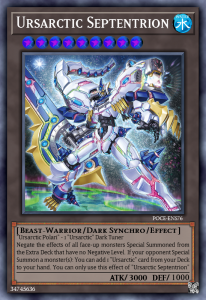 " (5D anime reference). Because of this, they can never be revived from the grave despite it being their Summoning Condition.
" (5D anime reference). Because of this, they can never be revived from the grave despite it being their Summoning Condition.
Things then get more confusing with Rituals and Pendulums. Just like the Extra-Deck mechanics, Rituals are Semi-Nomi monsters. They need to be Ritual Summoned first before the player can revive them from the grave. This confuses players thinking they can simply dump a Ritual Monster into the graveyard and revive them. It also doesn't help that the anime writing staff doesn't even know this rule, as there were numerous instances where the character (Asuka/Alexis) would just revive their Ritual Monster from the grave without properly Summoning it first. Then we complicate things further with Pendulum monsters. Despite being a unique Summoning mechanic with its card border, most Pendulum monsters aren't Semi-Nomi monsters. Most of them can be Normal Summoned, Set and even be revived even if it wasn't Pendulum Summoned properly first.
Now to further complicate matters are cards that ignore the summoning conditions. Now there are often cards that cheat out a summon. For example, Magician of Chaos can Special Summon any Chaos Ritual monster from the hand when it gets destroyed without actually Ritual Summoning the Ritual Monster. That's because Magician of Chaos has this clause, "ignoring its Summoning conditions". However, you're still not allowed to revive the Ritual Monster that Magician of Chaos summoned as it was never Properly Ritual Summoned.
Things then become more confusing with cards that revive a monster from the grave w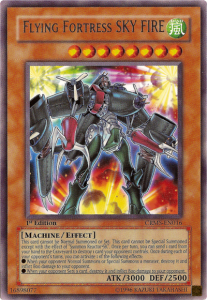 ith the clause, "ignoring its Summoning Conditions". Despite having that clause, Nomi and semi-Nomi monsters still can't be revived from the graveyard unless it was properly Summoned first. This makes a card like Dark Flat Top extremely bad and confusing. Many new players think they can simply discard Flying Fortress Skyfire (Nomi monster) into the grave and revive it with Dark Flat Top's effect because its revival effect comes with the clause, "ignoring its Summoning Conditions", only to be told that it doesn't work. What makes this rule even more confusing is IF Dark Flat Top's effect Special Summons Flying Fortress from the Deck or hand, rather than the grave, then the player would be able to Special Summon Flying Fortress.
ith the clause, "ignoring its Summoning Conditions". Despite having that clause, Nomi and semi-Nomi monsters still can't be revived from the graveyard unless it was properly Summoned first. This makes a card like Dark Flat Top extremely bad and confusing. Many new players think they can simply discard Flying Fortress Skyfire (Nomi monster) into the grave and revive it with Dark Flat Top's effect because its revival effect comes with the clause, "ignoring its Summoning Conditions", only to be told that it doesn't work. What makes this rule even more confusing is IF Dark Flat Top's effect Special Summons Flying Fortress from the Deck or hand, rather than the grave, then the player would be able to Special Summon Flying Fortress.
Summoning in Face-Up Defense Position
SCENARIO: T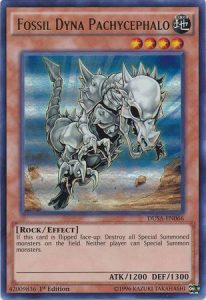 he opponent dressed up looking like a character from the anime. He screamed, "I believe in the heart of the cards", before drawing. He then says, "I have the winning card in my hand. He then proceeds to Normal Summon Fossil Dyna in face-up Defense Position. You countered by saying you can't normal summon things in a face-up defense position. He then criticizes you, saying Yugi does it, and he's the King of Games.
he opponent dressed up looking like a character from the anime. He screamed, "I believe in the heart of the cards", before drawing. He then says, "I have the winning card in my hand. He then proceeds to Normal Summon Fossil Dyna in face-up Defense Position. You countered by saying you can't normal summon things in a face-up defense position. He then criticizes you, saying Yugi does it, and he's the King of Games.
This confusion started with the anime. In the anime from DM to 5D, many characters Normal Summoned their monsters in face-up defense positions. Why didn't they just use the real-world ruling (setting)? No idea. Thanks to this, many newcomers often believe that monsters can be Normal Summoned in Face-up Defense Position. This ruling isn't confusing, but if a player doesn't understand Special Summoning, it can get a bit tricky for them. Thankfully, starting with Zexal, the anime began to use the real OCG/TCG ruling where monsters need to be set if you want to Summon them in Defense.
Once per turn and Hard/Only Once per turn
SCEN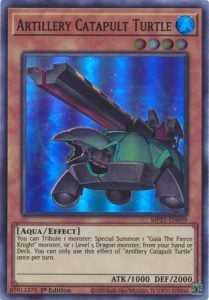 ARIO: You used Catapult Turtle's effect to tribute Blue-Eyes White Dragon to inflict 1500 damage to the opponent. You then send Catapult Turtle to the grave and revive it with Monster Reborn. You then proceed to activate Catapult Turtle's effect again by tributing the second Blue-Eyes to inflict another 1500 damage. Your opponent screamed, "Objection!" and claimed that you couldn't use Catapult Turtle's effect since it's once per turn.
ARIO: You used Catapult Turtle's effect to tribute Blue-Eyes White Dragon to inflict 1500 damage to the opponent. You then send Catapult Turtle to the grave and revive it with Monster Reborn. You then proceed to activate Catapult Turtle's effect again by tributing the second Blue-Eyes to inflict another 1500 damage. Your opponent screamed, "Objection!" and claimed that you couldn't use Catapult Turtle's effect since it's once per turn.
As Yu-Gi-Oh became more complex over the years, so did the combos and effects. Nowadays, cards have potent effects compared to when the game started. Because of this, Konami often gives cards once per turn, which stops the player from abusing them. This is usually written with the clause, "Once per turn:" on the card.
For example, Blackwing - Sirocco the Dawn has the following effects.
- Once per turn, during your Main Phase 1: You can target 1 "Blackwing" monster you control; until the end of this turn, it gains ATK equal to the total ATK of all "Blackwing" monsters currently on the field, except itself.
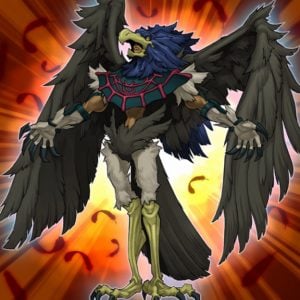
The "Once per turn" prevents the player from reusing the effect repeatedly in the same turn to boost its attack continuously. Simple, right? The confusion comes where that clause only applies to that physical card. Let's look at the following examples.
- I have one Sirocco the Dawn on the field. I can only use its effect once while it's face-up on the field.
- I have two Sirocco the Dawn on the field. The first one targeted the second Sirocco and boosted its ATK. The second Sirocco then use its effect by targeting itself, and further increases its ATK.
Notice how in the second example, the second Sirocco can still use its effect despite having a "once per turn" clause? That's because it's a different physical card from the first Sirocco despite being the same monster.
Now, to make things even more complicated, the once per turn clause only applies while the physical card is face-up on the field. Therefore, if the card moves to a different location and then back to the field again, it can reuse its effect. Let's look at the following example...
- Cyber Angel Natasha has a once per turn healing effect. You used the effect to heal your LP. You then send Cyber Angel Natasha to the grave (through whatever means). You then revived Cyber Angel Natasha from the grave back onto the field. Since it moved away from the field after it used its effect the first time, you can now use Natasha's healing effect again.
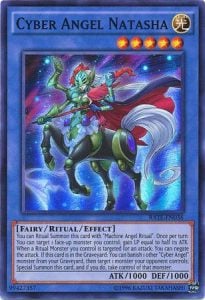
Because this is Yu-Gi-Oh, things get even more complicated with Hard Once per turn effect. Hard Once per turn is written as "Only once per/that turn" followed or preceded by the card's name. These are some examples of hard once per turn effects.
- Harpie Channeler: You can discard 1 "Harpie" card; Special Summon 1 "Harpie" monster from your Deck in Defense Position, except "Harpie Channeler". You can only use this effect of "Harpie Channeler" once per turn.
- Marincess Coral Anemone: You can target 1 WATER monster with 1500 or less ATK in your GY; Special Summon it to your zone this card points to, also you cannot Special Summon monsters for the rest of this turn, except WATER monsters. If this card is sent from the field to the GY: You can target 1 "Marincess" card in your GY, except "Marincess Coral Anemone"; add it to your hand. You can only use each effect of "Marincess Coral Anemone" once per turn.
- Sinister Serpent: During your Standby Phase, if this card is in your GY: You can add it to your hand, also banish 1 "Sinister Serpent" from your GY during your opponent's next End Phase. You can only use this effect of "Sinister Serpent" once per turn.
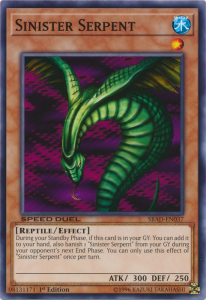 Notice how all three have the keyword "only", "once per/that turn" and the card's name? This clause prevents any cards sharing the same name from using the same effect again in a single turn. This means I can't use its effect twice even if I have two copies of Harpie Channeler. That also means that even if I send Harpie Channeler to the grave and revive it again, I still can't use its effect again since I have already used it the first time.
Notice how all three have the keyword "only", "once per/that turn" and the card's name? This clause prevents any cards sharing the same name from using the same effect again in a single turn. This means I can't use its effect twice even if I have two copies of Harpie Channeler. That also means that even if I send Harpie Channeler to the grave and revive it again, I still can't use its effect again since I have already used it the first time.
Finally, another one makes this whole thing even more complex, "You can only gain this effect once per turn". Thankfully, cards that have these effects usually grant extra normal summons. Anyways, here are the following cards with this type of clause.
- Laser Qlip: During your Main Phase, you can Normal Summon 1 "Qli" monster in addition to your Normal Summon/Set. (You can only gain this effect once per turn.) Normal Summons of "Qli" monsters cannot be negated.
- Fire Formation - Tensu: During your Main Phase, you can Normal Summon 1 Beast-Warrior monster in addition to your Normal Summon/Set. (You can only gain this effect once per turn.) All Beast-Warrior monsters you control gain 100 ATK.
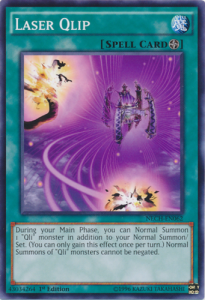
Now what this clause means is basically, both players can only use one effect of this clause per turn, even if they have different names. For example, Fire Formation - Tensu, grants me an extra Normal Summon for a Beast-Warrior monster. I can't use Atlantean Heavy Infantry (which also has this clause) to give me another normal summon.
Adding and Drawing
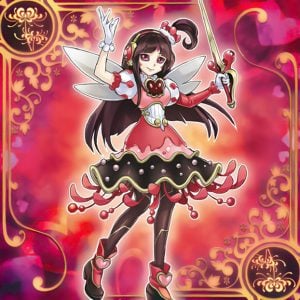 SCENARIO: You have Trickstar Lycoris on the field. You destroy Sangan with Lycoris. The opponent's Sangan's effect triggers, adding a card from Deck to the hand. Lycoris' effect then triggers, inflicting 200 damage. In the next turn, your opponent draws a card. Your Lycoris' effect triggers, burning him 200 damage. Your opponent is left confused, stating he never added cards to the hand.
SCENARIO: You have Trickstar Lycoris on the field. You destroy Sangan with Lycoris. The opponent's Sangan's effect triggers, adding a card from Deck to the hand. Lycoris' effect then triggers, inflicting 200 damage. In the next turn, your opponent draws a card. Your Lycoris' effect triggers, burning him 200 damage. Your opponent is left confused, stating he never added cards to the hand.
Adding and drawing. What's the difference? Adding is when you grab a card from your Deck, Grave, Banished pile or field to the hand. Drawing is when you draw a card from the top of your Deck. With this definition, drawing is ALWAYS a form of adding, but adding isn't always drawing. This can be confusing for some people, especially cards that specify drawing or adding.
Trickstar Lycoris is a card that punishes the player for adding cards by burning 200 dmg. Therefore, whenever the opponent's hand increases either by drawing, searching a card from the Deck, recovering a card from the grave or having a card from the field bounced back to the hand, the opponent will lose 200 lp from Lycoris' effect.
For example, you have Trickstar Lycoris on the field.
- The opponent activates Monster Reincarnation to recover Sangan from the grave. Lycoris will inflict 200 damage since a card was added to the hand.
- Your opponent attacks, and you countered with Storming Mirror Force, returning his monster to the hand. Lycoris inflicts 200 damage since a card was added to the hand.
- The opponent activates Pot of Greed to draw two cards. Lycoris inflicts 400 damage since drawing is also adding.
Pretty simple, right? Now let's talk about drawing now. We have cards like "Appropriate" that has this effect. 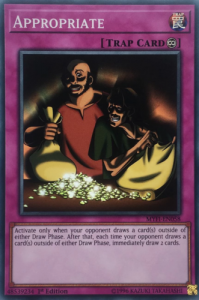
- "After that, each time your opponent draws a card(s) outside of either Draw Phase, immediately draw 2 cards."
Remember how I mentioned earlier that drawing is a form of adding, but not all adding is drawing? The card, Appropriate, will only trigger if the opponent draws a card (not searched, recovered, etc). For example, let's look at the following scenario.
- You have Appropriate on the field. The opponent activates Pot of Greed to draw two cards. Appropriate's effect activates since the opponent has drawn a card.
- You have Appropriate on the field. The opponent summoned Achichi @Ignister onto the field to add another @Ignister monster from the Deck to the hand. Appropriate's effect doesn't activate since the opponent didn't draw a card.
P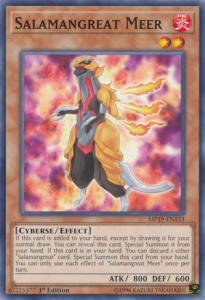 retty easy, right? Remember that drawing is always adding, but not adding isn't always drawing. But this being Yugioh, things get complicated. Oftentimes, Konami will specify specific adding into their effects. For example, Thunder King Rai-oh, Salamangreat Meer and Ancient Gear Box.
retty easy, right? Remember that drawing is always adding, but not adding isn't always drawing. But this being Yugioh, things get complicated. Oftentimes, Konami will specify specific adding into their effects. For example, Thunder King Rai-oh, Salamangreat Meer and Ancient Gear Box.
- Thunder King Rai-Oh: Neither player can add cards from their Deck to their hand except by drawing them.
- Salamangreat Meer: If this card is added to your hand, except by drawing it for your normal draw: You can reveal this card; Special Summon it from your hand.
- Ancient Gear Box: If this card is added from the Deck or Graveyard to your hand, except by drawing it: You can add 1 EARTH Machine-Type monster with 500 ATK and/or DEF from your Deck to your hand, except "Ancient Gear Box".
Notice how all three have specifications in their effects? Thunder King Rai-Oh prevents any cards from being added from the Deck, but drawing is fine despite drawing being part of adding. Ancient Gear Box specifies that its effect only triggers if added specifically from the Deck, meaning if it was added from the field, grave or banished zone, its effect won't trigger despite those being a form of adding.




